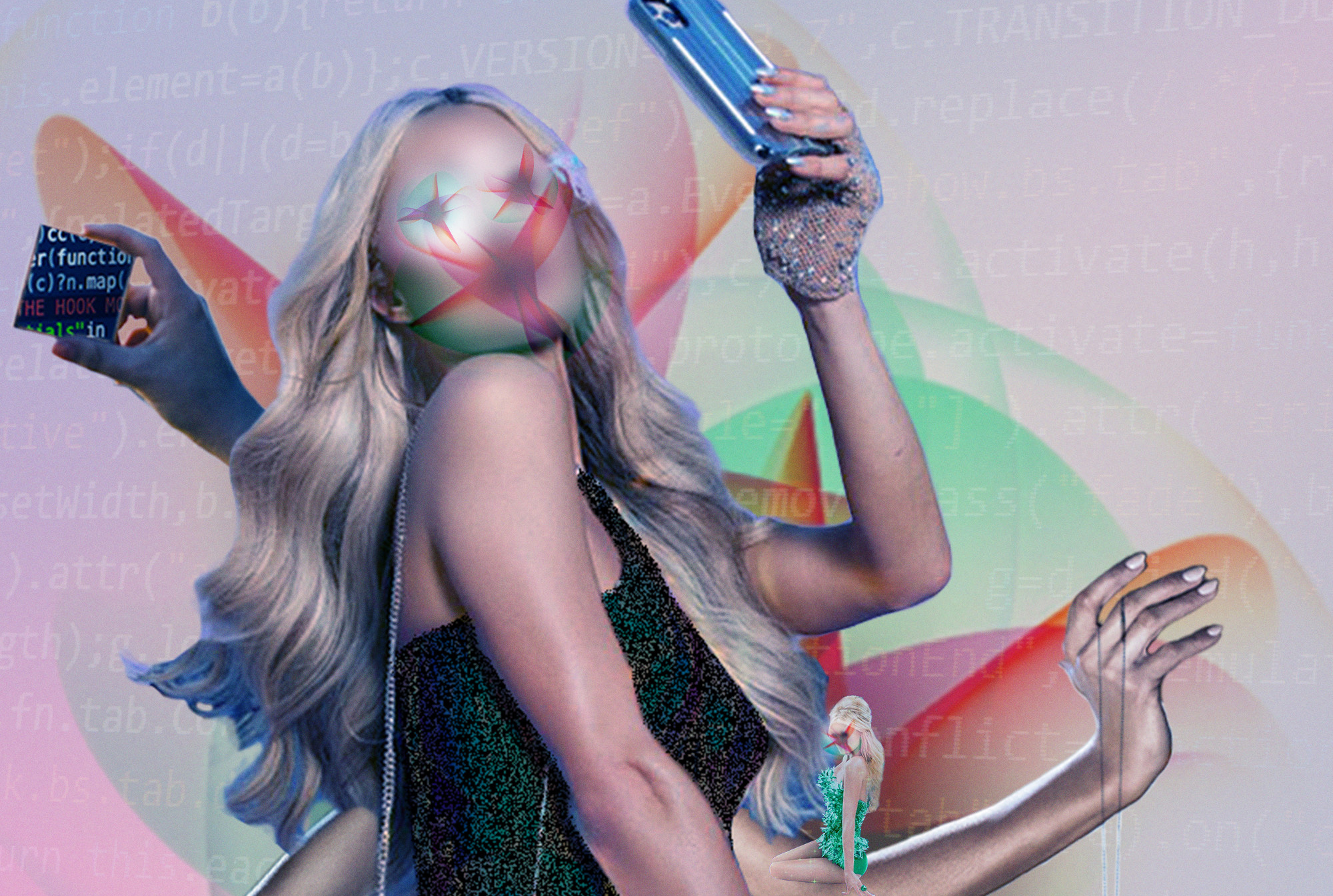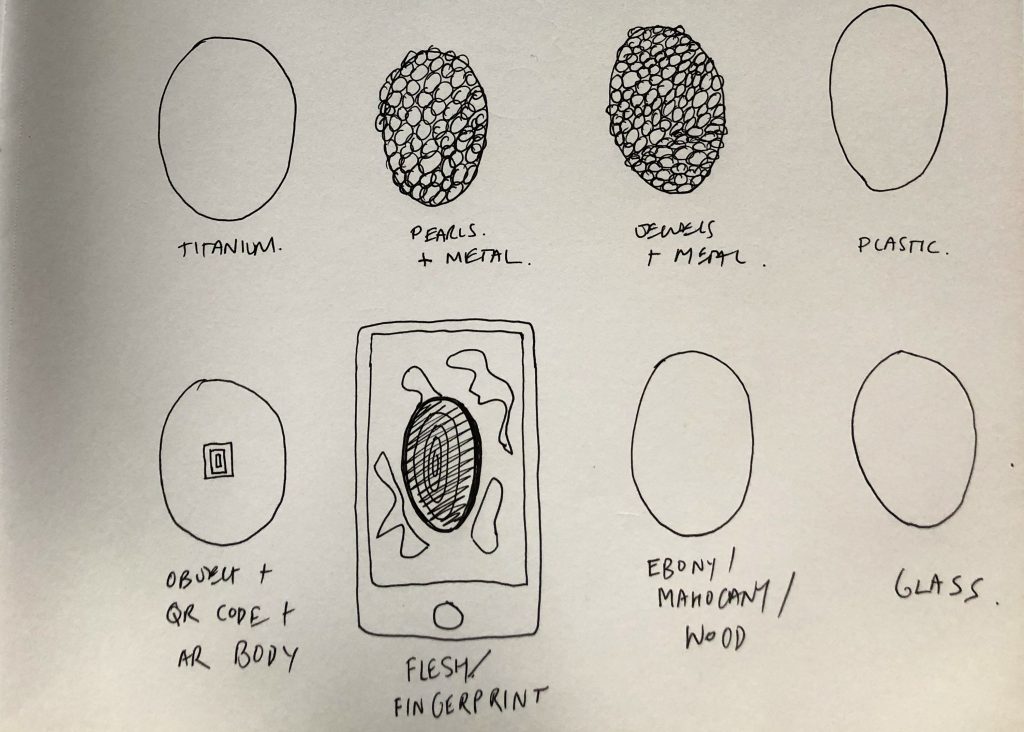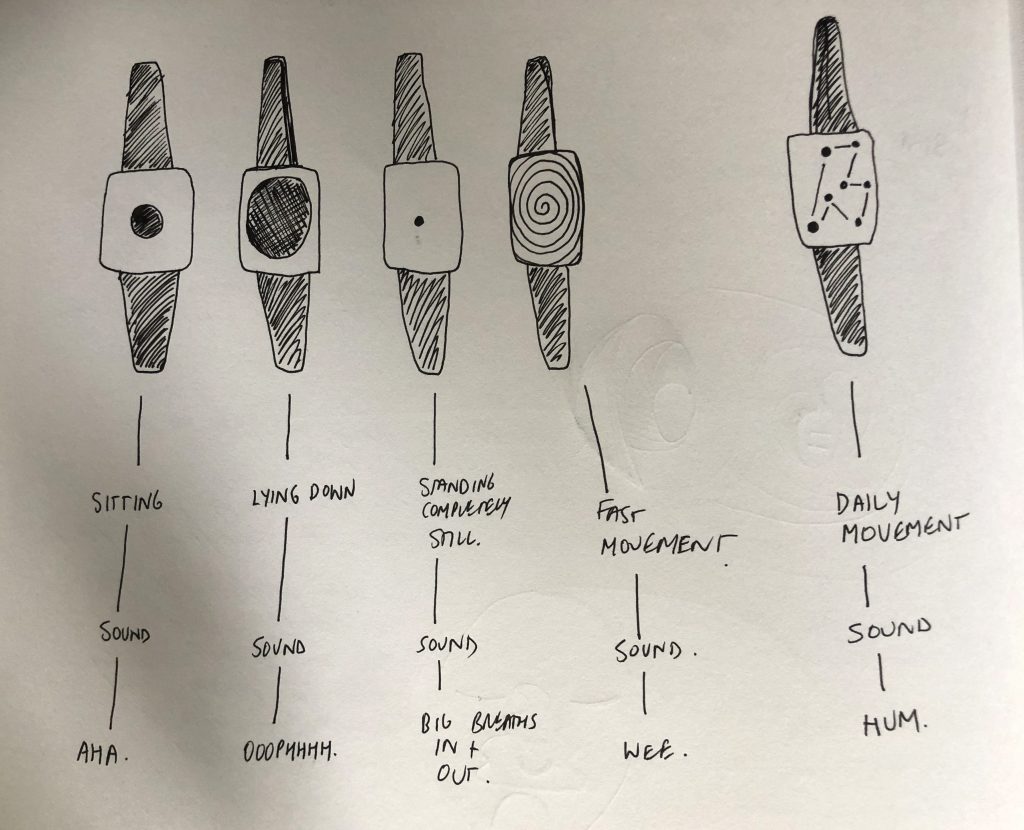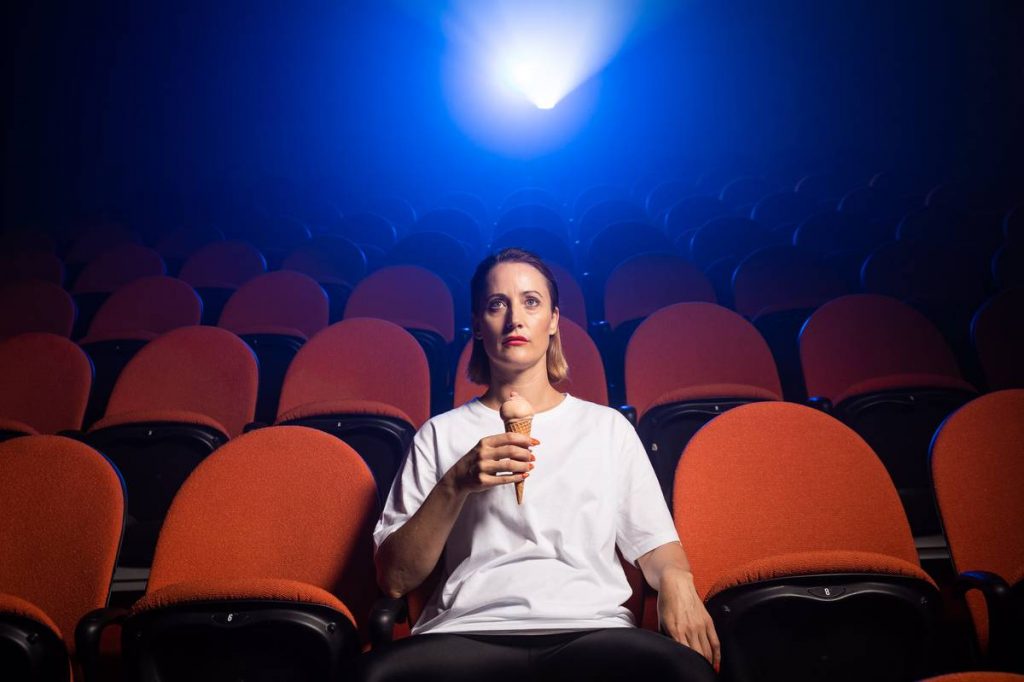
Willoh Weiland, Siri self-realised, 2020. Imagery Rebecca McCauley.
Dr Naomi Hunter in conversation with ANAT Ideate resident Willoh Weiland
Radio Adelaide’s Festival City Producer, Dr Naomi Hunter talked to ANAT Ideate resident Willoh Weiland about My Thing, a body of research looking into the possibility for art and technology to transform our experience of intimacy, by re-imagining the role of the digital companion. Willoh’s residency draws inspiration from the ‘90’s phenomenon of the Tamagochi, looking through the lens of queer theory.
Hear the whole conversation… or read an extract and transcript below.
Naomi: You’re listening to Festival City on 101.5. and on today’s show we have been having some enlightening conversations with some of our ANAT recipients of an Ideate grant. And this afternoon we are talking to Willoh Weiland and Willoh is actually based on Tasmania, and the proposal of the research was the possibility for art and technology to transform our experience of intimacy through reimagining the role of the digital companion. So welcome to the show, Willoh.
Willoh: Hi, thanks for having me.
Naomi: It is our pleasure. Now Willoh, I read this little guide here about your proposed research, because we all know that when you’re researching, where you begin is an idea, and where you end up, you never quite know how the research is going to go. When I’m thinking about our experience of intimacy and the role of the digital companion, I’m reminded of my niece at kindergarten where they have a little robot that can tell stories to the kids. And then I’m also reminded of a little show I saw about a nursing home when they had a robot dog companion. And I was wondering, you know, am I in the realm at all of the work that you do?
Willoh: Yeah, that’s a good question. I think they’re both great examples of the way that the companion or the idea of the companion is moving I guess a bit more beyond the instructional exchange that happens with Siri or Alexa or our computers into something that’s more in the realm of storytelling and participation, and an authentic, emotional idea of companionship. And I think they’re both good examples of how we can coexist with technology in a way that is kind of not task based, that is, that’s what’s what I’m interested in. I’m interested in those models and how they can be useful, I guess.
Naomi: And how did you come to this stage in your practice where you’re looking at researching that nexus between art and technology? Where did your creative practice start?
Willoh: I’ve worked a lot with different science institutions. I started off a long time ago with actually another ANAT supported project called Void Love, where I did a six months residency at the Swinburne Astrophysics and Supercomputing Centre.
Naomi: Oh wow…
Willoh: Melbourne Uni at the moment in their Interaction Design Lab. But more broadly I’m interested in working with non-artists, be that scientists or community members or senior citizen dancing clubs or whatever, because I’m interested in the conversation around art and what it can be. But this particular project I think came out of a particular body of work that came out of feminism and intersectional feminism from a kind of performance perspective. And I got a fellowship working at Melbourne Uni and I started to, I guess I’m always kind of trying to insert those conversations around art into this future practice, and kind of thinking into how artists can participate in modelling what’s next. Which the opportunities are, we’re not always invited into the room or to be at the table, I think. And so this really came out of thinking about the way that the quality of interaction that we have with Siri or Alexa, which we can observe in ourselves or in the way kids interact with those noises really I think to me, replicating a particular submission and misogyny about how we interact with women. And the research has come out of looking at that, and it goes right back to the conception of the female body in science fiction to how where the research into robotics, how we represent ourselves and how we represent the other which is usually female, is sort of where this is coming from. And I guess it’s a kind of attempt to I guess interrogate those ideas about gender particularly, and how we conceive of other beings, that I think is so important as we go about developing these technologies, which become more and more integrated into our daily lives, like your example, we all now have an example of an interaction with a robot in a daily way. So yeah.
Naomi: So in terms of displaying the visual images and creating that digital intimacy, how would you portray those themes of gender, feminism, what would people be looking at when they review your work?
Willoh: That’s a good question. I love these little Tamagotchi’s, people probably remember them…

Willoh Weiland, notebook, 2020. Image courtesy the artist.
Naomi: From way back.
Willoh: …they’re still going, and I’m interested in making an object or a wearable. I don’t really know the answer to what it looks like yet. There’s some beautiful examples. There’s an example in an aged care of a robotic seal that’s had a great kind of impact, and one of the reasons in the research that’s reflected on is because it’s not normally a type of animal that might exist in that environment. And therefore the interaction of the object itself is more to do with wonder and awe, and it has a different result in the participation in its kind of life or whatever. So that’s, I don’t know the answer except to say the idea that I think we’re in this especially moment in history where our relationship with our technology is oscillating between fulfilling this deep emotional need in ourselves to connect and to be with other people, and also just being like deeply annoying because we have to be on it all the time and we’ve all got Zoom dread, and we’re all going oh, another thing. And so I think that there’s something in the trying to pay attention and navigate what we need from technology. And to think of it in a kind of more, you know, in the idea of an encounter with another being, as opposed to just a functional thing. And that, I don’t think, it doesn’t need to be a robot for that. And we all just need a lot more help I think with navigating this landscape. And hopefully that can be just a bit more gentle and nice.
Naomi: I pick up my phone however many times a day and now I’ve got an app on there that tells me how many times I pick it up, for whether it is work related or personal, and often when people say to me, did you remember whatever, I’ll go, I’ve got my augmented memory here in my phone, because if I don’t remember, I’ve put it in there to remind me that this thing is happening. And I was considering this idea of intimacy and something being a digital companion, and I was thinking, when we say intimacy, what are we talking about? But then if you think about that, my phone is in my pocket, against my body, probably most of my day, I use it for a lot of my work, that in itself is a type of intimacy. So when you’re saying the experience of intimacy, do you want to just tease that out a little bit more for us?
Willoh: Yeah, I definitely don’t mean Grinder. I think those things about proximity, about exchange, interdependence, trust, mutuality, all of those things that are very basically actually, and can be extrapolated to many relationships we have, be it with our plants or our pets or our mum, or there are these commonalities. And I think we have just by the nature of this moment, we’ve extended that to these devices. But what we don’t have is, you know because this is to do with the capitalist machine, we don’t have simplicity actually I think. The Tamagotchi I really love because it offers this really simple idea, which is you can kill it. And that is really, that’s not something we’re always, we’re in a replaceable mode with our technology. And to me, those are, the high stakes nature of that reflects something interesting in that how we care for these things. Obviously, they’re not people. It sort of reflects how we care for ourselves is the point. And I think that we, beyond the kind of Gwyneth Paltrow mindfulness memes and whatever, there is a real necessity to understand the boundaries of care, and the way that technology can help us care for others and for ourselves. And so that’s a long-winded way of saying, it could be a FitBit, it could be…

Willoh Weiland, notebook, 2020. Image courtesy the artist.
Naomi: In a different way to killing off your Nintendo’s.
Willoh: Yeah, exactly. Exactly, good example.
Naomi: I think that it’s such a broad playing field there with the needs of an aging community but also especially being brought to light, this whole idea of physical isolation, that the notion of a digital companion actually isn’t such a crazy idea. It’s one of…
Willoh: The other mode I’m interested in is, if you want to think about what it might look like, I’m interested in sound as well as the visual. I think I love the, there’s a lot of research into sensorial play into technology. We can trigger things with our eyes, we can use sound to navigate, all these things. And again, they’re all very locked into a game narrative structure always drives us to winning or concluding. Companionship is not the same as an idea as a game structure. It’s more open ended and it gives different things. I guess the other thing to say is I’m really, my process is usually to work with other people to try and understand these things. And it’s art, not science. It’s not like an extensive diet pool, but it is important to understand different ages, different abilities. Age particularly and technology really relates to how we understand it, as per the aged care example.
Read the full Radio Adelaide transcript here

Willoh S Weiland, LICK LICK BLINK (production still), 2019. Participatory multi-media installation, ice-cream, 10 minutes. Image courtesy and © the artist. Photograph Daniel Boud.
THE COMPANION* Willoh S. Weiland, 2020
*Strong language warning
Companion is an ambiguous term- it indicates a personal bond, with an impersonal tone, it indicates care- it literally means to accompany.
In tech ‘the companion’ is a wide field from Siri who accompanies us on our daily tasks, to the Tamagochi that obsessed us in the ‘90s, fit-bit’s and health devices, Alexa in our homes to sex robots and teledildonic devices.
In the cultural imagination ‘the companion’ is an entity who sits at the nexus of the erotic and the domestic- they promise sex but do not necessarily fulfil that promise, they augment the tedium of the domestic and they nurture and allow us to nurture without the exhausting emotional and psychological bonds that come with a fully realised human bond.
The identity of the companion takes one of its cues from the the euphemisms used to describe partnership in queer relationships and heterosexual couples to describe their affairs- companion, beard, lavender dating, fag hag.
In queer culture these terms allude to the myriad of ways in which these partnerships to navigate the margin between ‘being out’ and avoiding the type of scrutiny which could so easily lead to violence. It remains a method by which the LGBTIQ community can navigate the slippage between the introduction of a loved one to a conservative family. ‘The companion’ becomes a way the erotic is acknowledged while maintaining the domestic meaning of friendship- more than just a lover. It is a way of maintaining power over the way in which the partnership is outed to the world. The position is – we are not obliged to expose ourselves to your violence- we will also will not hide.
It serves to obscure the identities of the companions themselves- in ‘The Autobiography of Alice B Toklas’ written by Gertrude Stein, she writes her own story through the eyes of her lover, a form of self-erasure and a declaration of love in tandem. The companions identities are indistinguishable from each other- they are both the mirror and the mirrored- neither are visible. Their need for each other the solely identifiable feature.
In this way ‘the companion’ becomes inseparable from both the taboo it hides and the love it obscures. Both are amplified by the euphemistic language, the secrecy. It is acceptable because it is kept secret and unacceptable for the same reasons. We know the companionship is hiding something and this hiding causes in turn these companion relationships to be scrutinised with obsession. Those who are shut out by the mystery of how the relationship functions- to uncover the exact nature of the balance- how much is domestic? How much is erotic?
In his Book ‘White Girls’ Hilton Alys describes the destructive envy of others as he and his ‘twin SL’ become friends.
‘As we became friends, the strangest thing happened: most of our acquaintances abused adverbs in their rush to condemn- violently, passionately- our becoming a we….(break in quote)
We faced these faces so many times: white women who had been denied nothing most of their lives feeling bitter about me and SL because they could not be part of “us,” but continuing to be attracted to us past the point of reason since they lived to be disappointed; white guys who wanted to fuck me for sport and resented SL’s presence because he was perceived to be the embodiment of my conscience, which could not be defiled; black women who called us freaks because we somehow represented their twisted relationships to their own bodies and other black women; ambitious black male artists who resented our presence largely because SL and I did not play the rules they followed in their quest for success.’
In the heterosexual world inside the ‘companions’ the idea of the muse and the mistress conflate. The cultural meaning is still erotic but without the pressure of secrecy it becomes a type of partnership that allows the usually male figure to nourish their sexual and creative inner lives. To have a companion is not vanilla- it is exploratory, imbalanced, improper. Companionship becomes a means to over-come the problematic constraints of conventional partnering.
In Susan Sontag’s short story ‘Dummy’ the narrator, because their domestic situation is intolerable constructs a dummy out of Japanese plastic, mechanically engineered parts and hair and install the Dummy in their life to replace them. The Dummy takes over fathering, copulating and the stresses of their work. The narrator through this replacement is able to wholly reject their situation without the drama of the loved person being wounded.
The replication of human function in an object allows us not just to avoid responsibility for the human relationship but to explore the failure of the conventional constructs around partnering, the failure of conventional constructs to encompass and allow the complexity of desire.
When an object becomes a companion the multiple function of the erotic, the domestic and the nurturing remain in different balances. The companion object is a magical tool- that is they need us to function and without us they remain inert and lifeless. But when we do engage them, this engagment forms a bond. They become more than a ‘wunderkammer’ – they combine the awe and unease of the uncanny object with a more tactile and immediate sense of play. They can become fully experienced relationships that can allow the expression of emotions and desires, our kinks, our selfishness, our greedy need, our obsessiveness to be accepted- as a human companion would- without the horror of potentially destroying another person.
The relationship with the object is allowed by its inanimateness to be unbalanced- to support the power of the owner. It places no constraints on their engagement. In our relationships with them- they tell us about our own capacity for care and they allow us to explore it without judgement. We can feed and clothe our latex babies, we can prop our realistic sex doll in an armchair and tell her stories and then ignore her, we can fuck ourselves with our dildo’s for days on end. Even the fit-bit or other health tracker devices- thought not marketed as companions- in a world where health and beauty are inextricably linked feed back to us details about our self-care, self-love.
The Tamagotchi alone is unique in its demands.
Willoh S. Weiland (b.1980, Seine Bight, Belize) is an artist, writer and curator. Over the last fifteen years Weiland has created large-scale performance works and art events, both independently and as Artistic Director of artist-led experimental arts organisation Aphids (2010-2018). Collaboration is a vital element of Weiland’s work and themes such as feminist politics, science and the mediating impact of technology recur throughout her practice. She has recently presented new work as part of The National, Museum of Contemporary Art, Sydney (2019) and the Adelaide Biennial of Australian Art, Art Gallery of South Australia (2020).
Read more about ANAT Ideate